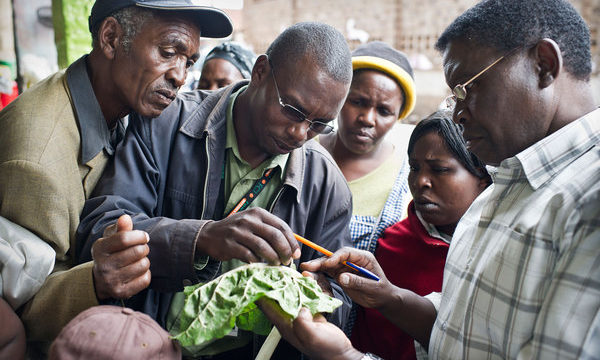 by Ben Schaap, Tim Davies and Ana Brandusescu, GODAN
by Ben Schaap, Tim Davies and Ana Brandusescu, GODAN
What is open data?
We all make decisions everyday based on different sources of information. Much of that information ultimately starts out as digital data. Open data is about changing the default, so that instead of being locked away for the benefit of a few, data is accessible as widely as possible.
Open data is data that anyone can access, use and share. In practice, that means making data accessible online, putting in standard digital forms which are machine-readable and having terms or licenses that allow anyone to reuse the data for anything [1].
Who can use open data?
You might already be using open data – directly, or indirectly. To access open data directly usually requires access to a computer, and the resources and skills to work with datasets. However, intermediary organisations also take open data resources, and turn them into new campaigns, services or products that can be accessed directly, or through mobile phone platforms.
What data?
All kinds of information can be made available through open data: it can be satellite imagery, weather datasets, trade statistics and market prices. Making a dataset open is about mobilization and connection: unlocking the potential of data by encouraging others to use it, and to collaborate around it.
Data that farmers use: weather data, agricultural inputs (fertilizer, water, insurance, mechanisation, crop protection), soil data, market price data.
How does open data benefit farmers?
What do I plant, when do I plant, how much fertilizer do I give and to whom am I selling my crop? These are just some examples of decisions a farmer needs to make every planting season.
All operational decisions and decision on the economic viability of the farm take into account risk management, regulation compliance, economic optimisation, investments and labour capacity. To make these decisions, farmers traditionally use data they know. They listen to the weather forecast, look at their past crop performance, and consult experts in case they find a problem. Most farmers record what they do and how much they earn from certain crops. By doing this, farmers are constantly learning and improving.
Now when farmers enter the digital age they are better connected and there are more possibilities to gather information and store information about their farm. This provides a great opportunity to get easier access to data that is meaningful and get a better analysis of farm performance. Services such as Decision Support System (DSS) for farmers are offered via smart phone, PC or even via SMS; the farmer has the knowledge at his fingertips.
The availability of open data will increase the possibilities for farmers and their service providers to deliver meaningful knowledge to take decisions that will improve their farm operations and make strategic decisions on investments. Open data gives also access to better market information [2]. Precision agriculture can even collect geo-referenced data from sensors on tractors and in the field [3].
Taking farming to the next level
There is a lot of talk right now about how data will drive change in agriculture. Many people don’t know what the value of open data is – that’s why we’re here. We believe the benefits can be amplified when we focus on open data. Open data will offer a more ‘even’ level playing field for farmers that operate in the digital age because the data is available for all. Investments in open data by data providers will also lead to better interoperability of data sources and of products from service providers.
GODAN is working to promote ‘open by default’, and to work with partners to develop effective models for responsible data supply and use [4]. We bring together a broad network – including governments, grassroots, NGOs and the private sector: working together to explore the challenges of making open data work best for agriculture.
You can:
- Find out about the open data that might already be available to support your decision making;
- Join the campaign for key data and information to be accessible to all;
- Join the discussions about collaborative and cooperative approaches to managing the availability, ownership and use of farm-level data.
| Questions to ask:
When you hear about a new data-driven innovation in farming and agriculture, ask yourself:
Open by default keeps innovation unlocked: providing a platform for development. |
Information on joining GODAN
GODAN’s strength is in the diversity and expertise of its partners in moving forward the open data agenda in food and agriculture. We welcome enquiries from those interested in joining us so do get in touch or view more details on what being a partner means.
Sources
[1] Open Knowledge; Open Data Institute & EU resources
[2] CTA. Open Data and Smallholder Food and Nutritional Security
[3] Ajit Maru. Taking stock of challenges for global open data in agriculture and nutrition
[4] theengineroom
1 Comment
Leave a Reply
Related News & Blogs
Enabling Data Access Project: Supporting Grantmakers and Digital Capabilities in India and Ethiopia
(Image by Kevin Ku, Pexels) The Enabling Data Access project, funded by the Bill & Melinda Gates Foundation aims to support the improved design of grants with data components in collaboration with the Open Data Institute (ODI). The c…
23 August 2021





[…] Open data is data that anyone can access, use and share. In practice, that means making data accessible online, putting in standard digital forms which are machine-readable and having terms or licenses that allow anyone to reuse the data for anything [1]. […]